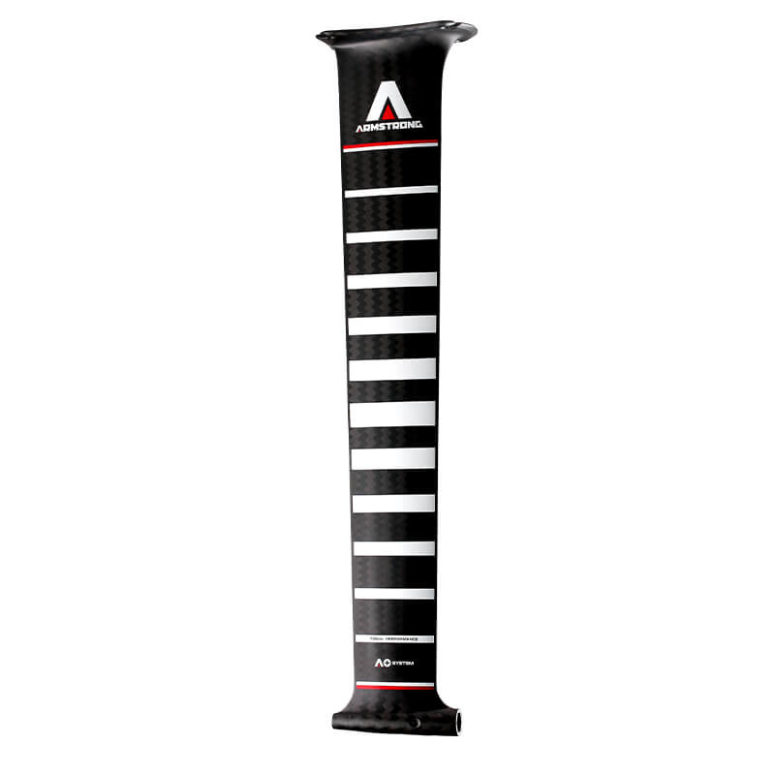

When you purchase gear through links on our site, we may earn a small commission. Here’s why you can trust our tests and our affiliate partner.

The era of Mast Wars is well and truly upon us, with several of the more progressive industry players releasing revised high modulus offerings in the last six months or so to help flush out any wiggle in their foil systems. 100 plus prototypes later, Armstrong have joined the race for stiffness, and boy have they made a superb job of it.
Three sizes are available: 795, 935 and 1035mm, which should transcend surf, wing, kite and tow disciplines respectively. It comes packaged with the usual Armstrong high-end niceties with a futuristic reflective cover with removable base section that Velcros on and off for transport. Foil track fixings have been completely revised from the former A+ system, with all-new rainbow-colored titanium M7 track hardware. The apertures in the base plate are now countersunk open toe at each corner, and they’ve eliminated the washers from the system, making getting the mast on and off less fiddly and more efficient, and minimizing weight and drag and maximizing strength. The top fixing layout is the same arrangement as the A+ system and there’s complete backward compatibility with the fuselages and wings. Weight-wise, the 935cm comes in at a smidgen over 2kg at 2065g on our scales.
Armstrong have used a mixture of carbon composites, with intermediate modulus forming the more complex structure of the baseplate and fuse connection, and high modulus carbon stiffening up the thinner mid-section. This is sourced from American supplier Toray, who also supply the aeronautical industry, namely Boeing as well as AC boats. Particular attention has been paid to fiber orientation and keeping its physical form to an absolute minimum to keep weight down.
The sectional design has been completely revised, with a focus on both low drag and forgiving characteristics, which we would confirm as an extremely successful operation. The mast never seems to cavitate when pushed into high-speed turns and gives a very sure-footed feel and builds your confidence to rip harder. Much like the A+ system before it, the new mast comes well-tuned from the factory and remains beautifully silent through the water.
A degree of positive rake has been built into the mast, to keep the nose of the board up, and help work with boards from different brands. This is a cunning way of enhancing the ride feeling without altering the fore and aft foot pressure. It seems to prevent you going over the handlebars on more significant touchdowns as well as keep things lined up and efficient when water starting.
As a heavier rider the Performance mast has enabled me to SUP foil with confidence, losing nothing in flex in both cornering and pump. Particularly with a larger, wider span wing such as the HA1325, this is extremely noticeable, and it’s drawing me back to the Armstrong system where I’d previously strayed away onto something stiffer in these circumstances. The transfer of energy when pumping is far more efficient, and you’ll go much further with much less effort.
Winging is now pushing me into larger swells necessitating a longer mast to make it over white water more easily and allow a little more pitch correction on bigger drops. The P935 shows how much control they’ve crammed into a larger span of carbon, and allows you to confidently use a taller mast without losing any discernible feeling through the corners. The level of control is enhanced significantly, immediately you feel more precise snappy turns almost irrelevant of your mast height, which really shines on a choppier wave face.
Armstrong’s Performance masts are both stiff and elegant, and offer a tangible step up in all-round performance. For the more progressive rider, it’s perhaps an essential upgrade to a system at the forefront of the market. RB